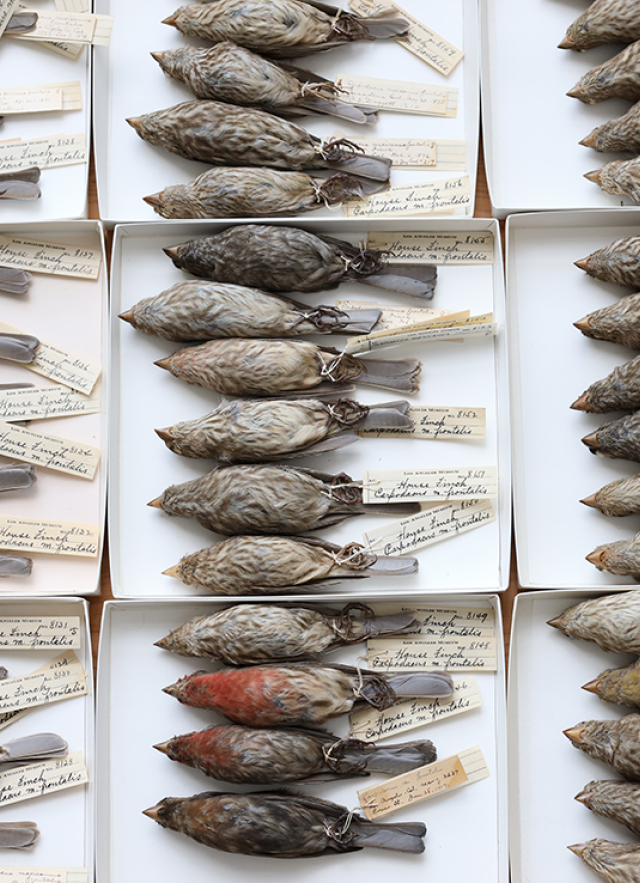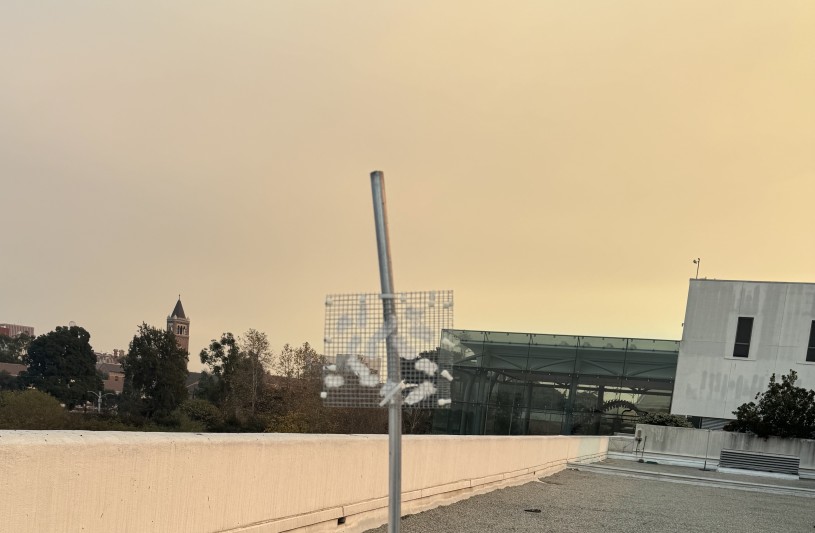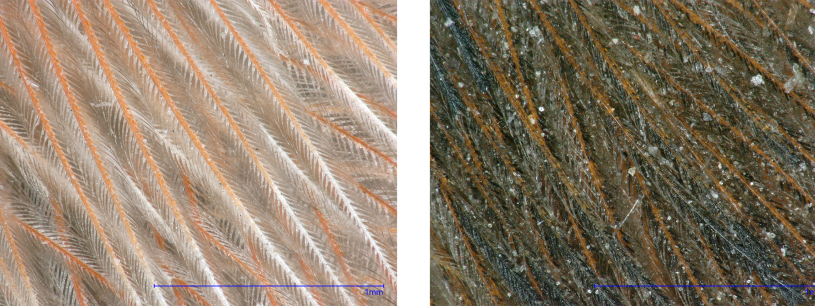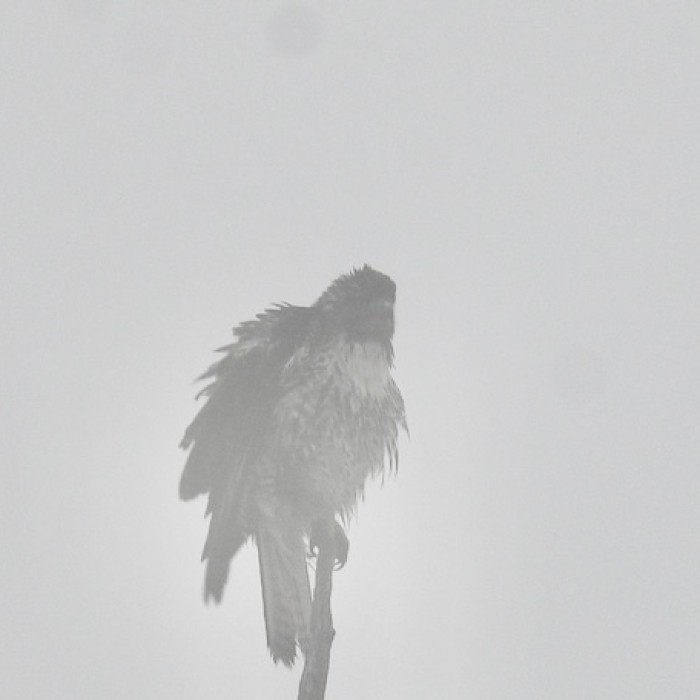Wildfire Smoke in Bird Feathers
NHM researchers look at dirty feathers to understand the effects of wildfire smoke on birds

Published January 21, 2025
Feathers Are Filters
With Project Phoenix, NHM researchers and community scientists observe birds in their neighborhood to understand how wildfire smoke impacts birds, but that’s just one way museum science can help. “Feathers are essentially filters,” says NHM Curator of Ornithology, Dr. Allison Shultz, which is why Shultz, along with Estella Hernandez, were installing pigeon feathers on the Museum’s roof, in the Nature Gardens, and in her own backyard as massive smoke plumes billowed from the fires burning in the hills raging in northwest and northeast L.A.

Dangerous pollutants stick to bird feathers, so Shultz and other NHM researchers have been looking at bird specimens in the collections, comparing dirty birds to clean ones to understand the long-term effects on bird health. “We're focusing mostly on the carbon just because that's been the most straightforward contaminant to measure from the specimens that we're studying,” says Shultz. “But we could study anything that's on the feathers, and in the future we will be looking for some heavy metals. Chromium, in particular, has been linked to some of the adverse health outcomes in humans who have been exposed to wildfire smoke.” The same Raman spectroscopy they’ve been using to measure carbon on feathers can identify the fingerprints of other pollutants that might be in wildfire smoke, like microplastics or heavy metals.

To find out the extent of the damage—and how to help—both collection specimens and community science are crucial. “It's impacting their biology and their ability to survive,” says Shultz. “How all of these contaminants are trapped in their feathers in the long term, that's the one piece that we're focusing on right now, but that could have huge health impacts for birds. We just don't know and this is how we can try and understand.”
